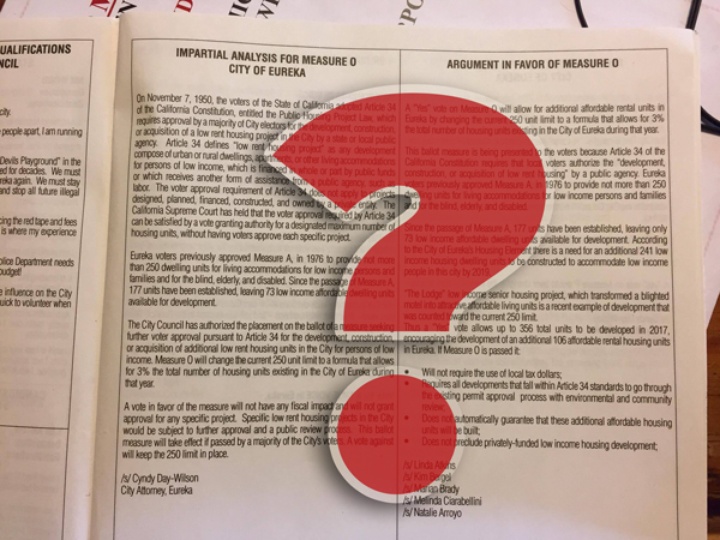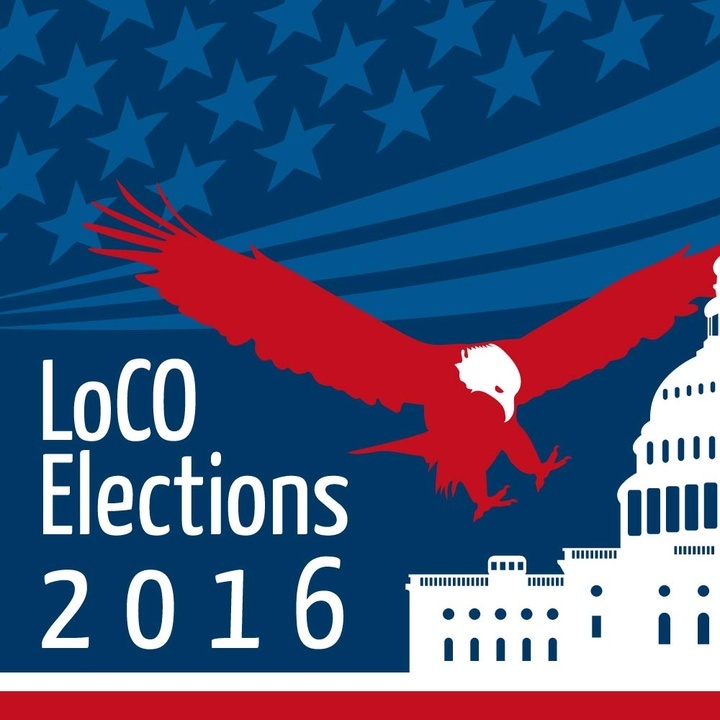
Measure O My Word

LoCO VOTES
No, really. What in god’s name does this thing mean? We at the Outpost have read our fair share of wonkish government documents. (Bureaucrats and attorneys aren’t known for their graceful prose.) But the jumbled word-salad of Eureka’s Measure O is pretty much unparalleled. Reading this initiative (the first half-dozen times) is like having your brain tossed into a tumble dryer with some boots and dictionaries.
Behold:
Measure O
City of Eureka Low Income Housing UnitsShall the 250 limit on dwelling units for living accommodations for low income persons and families and for the blind, elderly and disabled to be developed, constructed or acquired by public bodies within the City of Eureka be amended to provide that the number of low income rental units authorized shall be limited in any year to three percent (3%) of the total number of housing units existing in the City of Eureka during that year?
Okay, deep breath. Let’s break this sumbitch down. We got some help deciphering Measure O from Rob Holmlund, Eureka’s community development director, who said of the verbiage, “It’s accurate but difficult to read.”
Quite simply, Measure O would allow more affordable rental housing to be created in Eureka. Article 34 of the California Constitution mandates that no “low rent housing project” can be developed, constructed, or acquired unless voters approve it. It’s been 40 years since Eureka voters agreed to provide “not more than 250 dwelling units” for low-income folks and for the blind, elderly and disabled, and the city is rapidly approaching that limit.
“We’re at the point where we won’t have any subsidized government housing,” Holmlund said.
That’s a problem given that Eureka identified a need for 241 new low-income housing units during the 2014-2019 planning period. That’s in the city’s most recent Housing Element. Measure O would scrap the 250-unit limit and replace it with a benchmark of 3 percent of the city’s total housing in any given year.
Here’s how that would work: Eureka currently has about 11,875 housing units. Three percent of that total is 356. So if Measure O passes Eureka would be limited to 356 government-subsidized low-income housing units. If, say, a decade from now Eureka’s population has grown and we have 13,000 housing units then the city could have up to 390 subsidized low-income housing units.
All five members of the Eureka City Council — often a bitterly divided group — signed the ballot argument in favor of Measure O. They note that the measure:
- Will not require the use of local tax dollars;
- Requires all developments that fall within Article 34 standards to go through the existing permit approval process with environmental and community review;
- Does not automatically guarantee that these additional affordable housing units will be built; [and]
- Does not preclude privately funded low-income housing development.
Nobody submitted a ballot argument against the measure.
City Councilmember Natalie Arroyo took to Facebook to stump for this thing:
CLICK TO MANAGE